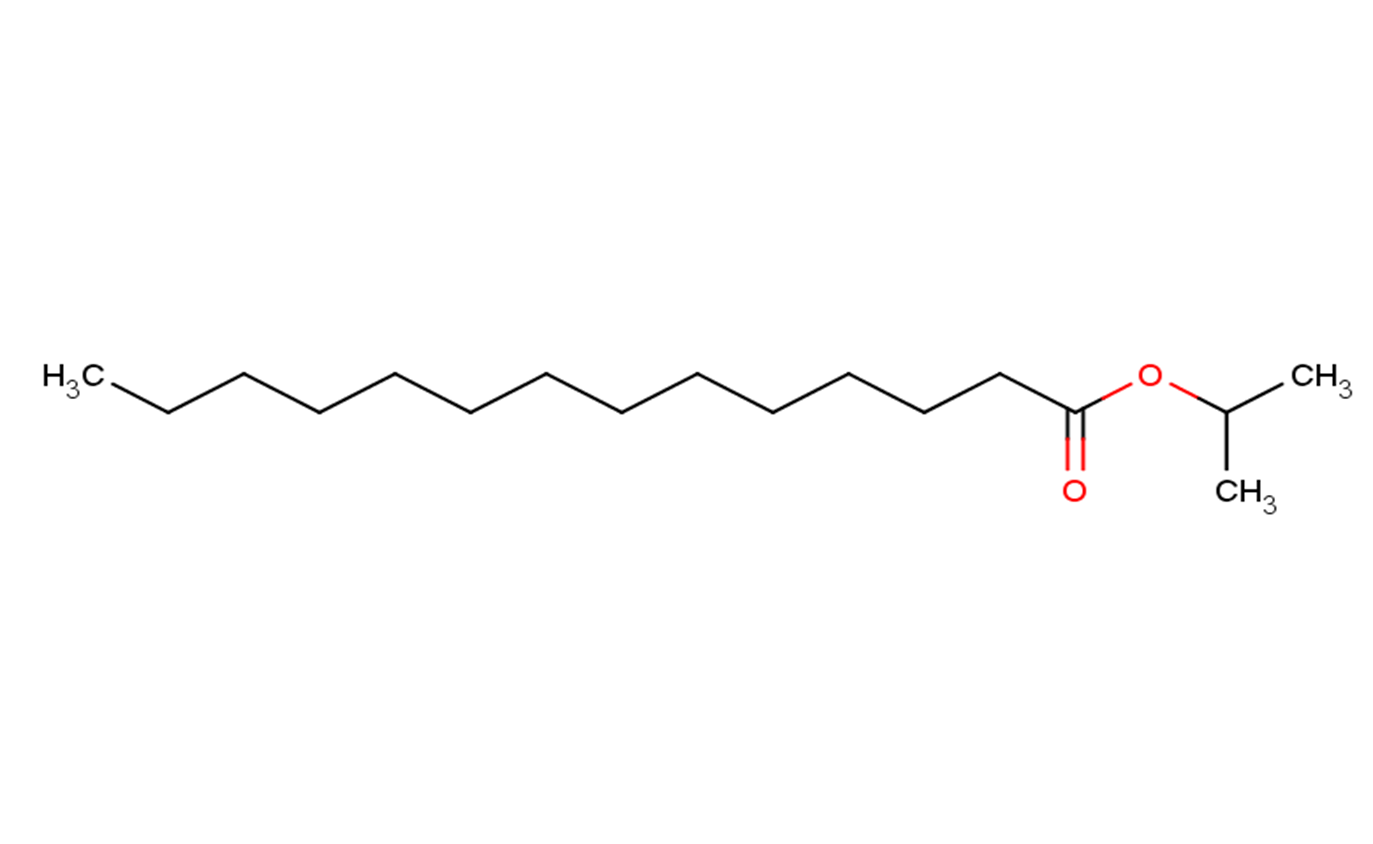
Isopropyl myristate
CAS No. 110-27-0
Isopropyl myristate( Stepan D-50 | FEMA No. 3556 | HSDB 626 | IPM | Isomyst | NSC 406280 )
Catalog No. M23303 CAS No. 110-27-0
Isopropyl myristate is the isopropyl alcohol and myristic acid ester.
Purity : >98% (HPLC)
 COA
COA
 Datasheet
Datasheet
 HNMR
HNMR
 HPLC
HPLC
 MSDS
MSDS
 Handing Instructions
Handing Instructions
| Size | Price / USD | Stock | Quantity |
| 500MG | 35 | In Stock |


|
| 1G | Get Quote | In Stock |


|
Biological Information
-
Product NameIsopropyl myristate
-
NoteResearch use only, not for human use.
-
Brief DescriptionIsopropyl myristate is the isopropyl alcohol and myristic acid ester.
-
DescriptionIsopropyl myristate is the isopropyl alcohol and myristic acid ester.
-
In Vitro——
-
In Vivo——
-
SynonymsStepan D-50 | FEMA No. 3556 | HSDB 626 | IPM | Isomyst | NSC 406280
-
PathwayOthers
-
TargetOther Targets
-
RecptorOthers
-
Research Area——
-
Indication——
Chemical Information
-
CAS Number110-27-0
-
Formula Weight270.45
-
Molecular FormulaC17H34O2
-
Purity>98% (HPLC)
-
SolubilityDMSO:Soluble
-
SMILESCCCCCCCCCCCCCC(OC(C)C)=O
-
Chemical Name——
Shipping & Storage Information
-
Storage(-20℃)
-
ShippingWith Ice Pack
-
Stability≥ 2 years
Reference
1.Burgess IF, Silverston P. Head lice. BMJ Clin Evid. 2015 Jan 14;2015. pii: 1703. Review. PubMed PMID: 25587918; PubMed Central PMCID: PMC4294162.
molnova catalog



related products
-
Teniloxazine
Teniloxazine is an orally available antidepressant compound with anti-hypoxic properties.
-
25-Hydroxycholestero...
25-Hydroxycholesterol is a steroid derivative that suppresses the cleavage of sterol regulatory element binding proteins (SREBPs).
-
PNU-177864
dopamine D3 receptor antagonist.



 Cart
Cart
 sales@molnova.com
sales@molnova.com


